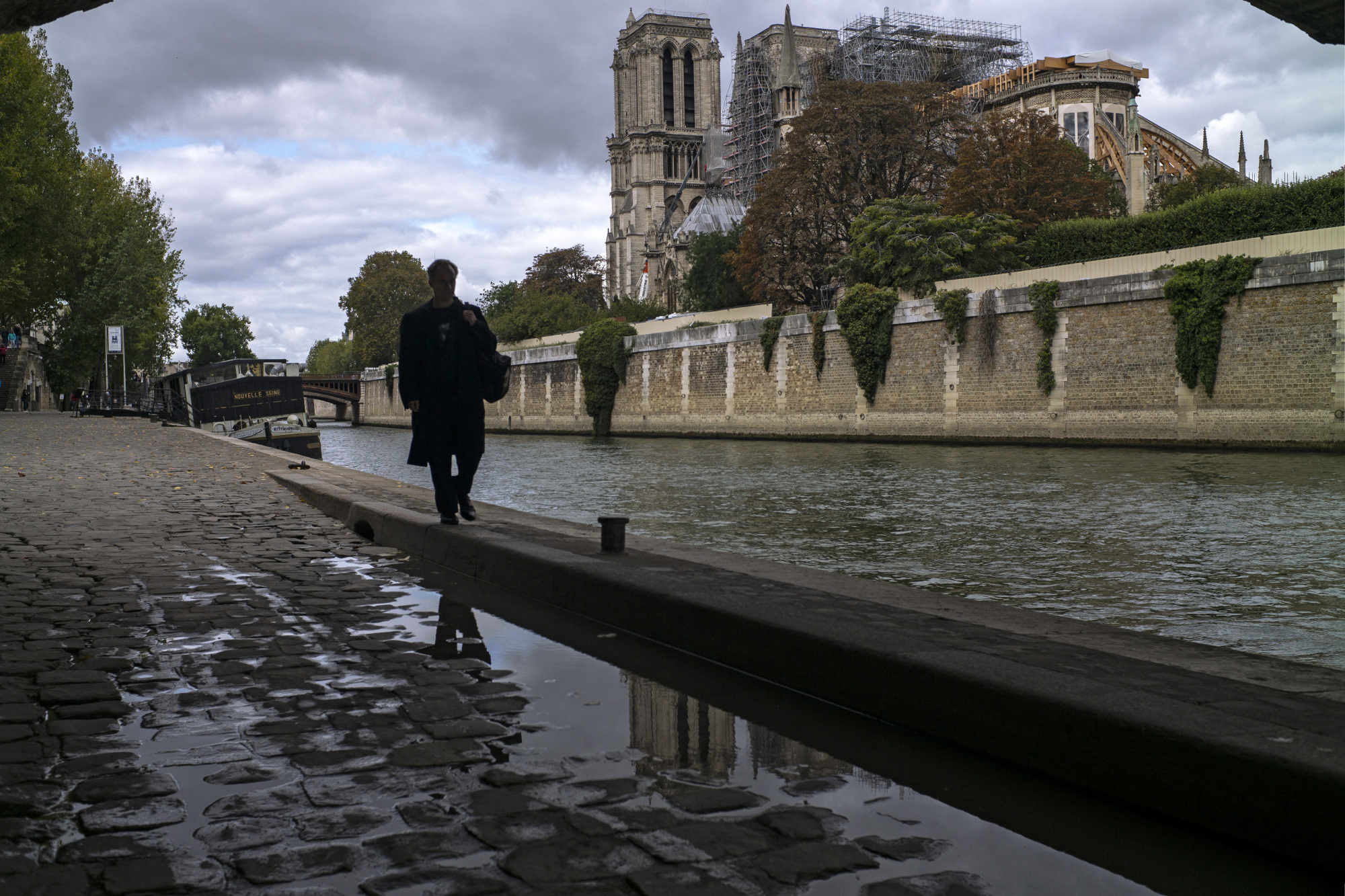Notre Dame Cathedral is still at risk from the 551 tons of scaffolding that fused above it during the searing blaze that destroyed the Paris monument's roof and towering spire six months ago.
The tangled metal poses the biggest challenge to efforts to ensure that the landmark cathedral's vaulted ceiling doesn't collapse, it was reported, citing an interview with Christophe-Charles Rousselot, the head of the Notre Dame Foundation.
The scaffolding, characterized as looming above the cathedral like a big game of Pick-up Sticks, needs to be dismantled without the pieces falling onto the building.
The difficulty involved in consolidating and reinforcing the Gothic structure means that decisions on how best to restore it cannot be taken until the end of 2020.
The costs to get to that point have spiraled to €85 million ($94 billion) from an estimated €30 million in April. Renovation is not scheduled to start until 2021.
The work to take down the old scaffolding will take several months. Another structure will have to be built above it, and from there workers will rappel down to carefully separate and remove the tubes one by one. Planking will also be installed above and below the vaulted ceiling in order to study more closely what state it is in and whether any of the stones need to be replaced, according to the Agence France-Presse news agency.
April's fire started on the roof, which was partly covered with the scaffolding because restoration work was underway.
The blaze quickly consumed the cathedral's massive 13th-century wooden beams and threatened to take down the entire structure. It took more than 12 hours to fully extinguish the fire.




